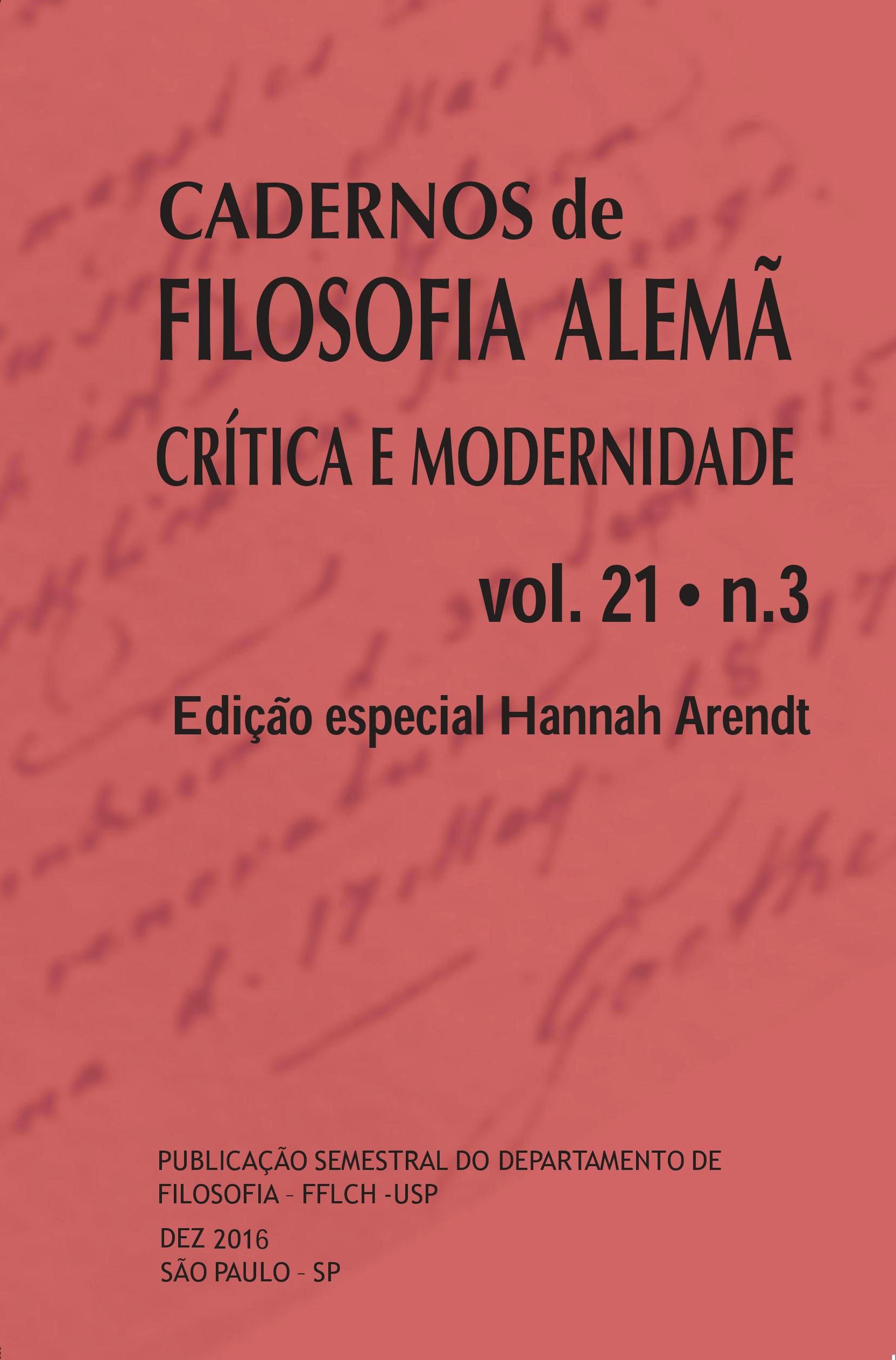Power, violence and revolution in Hannah Arendt’s political thinking
DOI:
https://doi.org/10.11606/issn.2318-9800.v21i3p13-27Keywords:
Arendt, violence, power, revolution.Abstract
I discuss the Arendtian distinctions between power and violence and refer them to her analysis of modern revolutions. After retracing that distinction, I discuss its relational character and the interpretations that stress its supposedly rigid and essentialistic features. By highlighting its relational dimension, I argue that Arendt’s distinctions allow us to understand differences between diverse phenomena as well as their intrinsic relations, so that thinking the political requires thinking violence, and thinking the public implies considering the private. Finally, I argue that the legacy of Arendt’s analysis of revolutions reside in suggesting ways to revitalize the exercise of present democracy.Downloads
References
Arendt, H. (1970). On violence. Orlando: Harcourt Brace Jovanovich.
___________. (1972). Crisis of the Republic. New York: Harcourt Brace.
___________. (1977). “Public Rights and Private Interests, in response to Charles Frankel”. In: Small Comforts for Hard Times, Humanists on Public Policy. New York: Columbia University Press.
___________. (1979). “Hannah Arendt on Hannah Arendt”. In: M. Hill (ed.). The recovery of the public world. Nova York: St. Martin’s Press.
___________. (1987). On Revolution. Harmondsworth: Penguin Books.
___________. (1989). The Human Condition. Chicago: University of Chicago Press.
___________. (1993) Between Past and Future. Eight exercises in political thought. New York: Penguin Books.
___________. (1993a). Was ist Politik? Aus dem Naclaß. U. Ludz (ed.). Munique: Piper Verlag.
___________. (2006). “Trabalho, obra, ação” . Tradução de Adriano Correia. In: Hannah Arendt e a condição humana. Salvador: Quarteto editora.
Benhabib, S. (1996). The reluctant modernism of Hannah Arendt. Thousand Oaks: Sage Publications.
Duarte, A. (2000). O pensamento à sombra da ruptura: política e filosofia em Hannah Arendt. São Paulo: Paz e Terra.
___________. (2007). “Hannah Arendt, Biopolitics and the problem of violence: from animal laborans to homo sacer”. In: D. Stone, R. King (eds.): Hannah Arendt and the uses of History: imperialism, nation, race and genocide. London: Berghahn Books, v.1.
___________. (2009). “Poder e violência no pensamento político de Hannah Arendt: uma reconsideração.” In: Arendt, H. Sobre a Violência. Rio de Janeiro: Civilização Brasileira.
___________. (2012). Pensée de la communauté et action politique: vers le concept de communautés plurielles. Rue Descartes, 4(76). Recuperado de: http://www.cairn.info/revue-rue-descartes-2012-4-page-20.htm. Acesso em: 24 nov. 2015.
___________. (2012a). Singularização e subjetivação: Arendt, Foucault e os novos agentes políticos do presente. Principios, 19, pp.10-34.
Enegrén, A. (1984). La Pensée Politique de Hannah Arendt. Paris: PUF.
Esposito, R. (1999). ¿El origen de la política: Hannah Arendt o Simone Weil? Barcelona: Paidós.
____________. (2006). Categorías de lo impolítico. Buenos Aires: Katz Editores.
Habermas, J. (1980). Habermas. Barbara Freitag; Sérgio Paulo Rouanet (orgs.). Coleção Grandes Cientistas Sociais. São Paulo: Ática.
Honig, B. (1995). “Toward an Agonistic Feminism”. In: Feminist Interpretations of Hannah Arendt. B. Honig (ed.). Pennsylvania: Penn State University Press.
Koselleck, R. (2006). Futuro Passado. Tradução de Wilma Maas e Carlos Pereira. Rio de Janeiro: Editora Contraponto.
Rawls, J. (2000). Liberalismo Político. São Paulo: Ática.
Sauhí, A. (2002). Razón y Espacio Público. Arendt, Habermas y Rawls. Mexico, DF: Ediciones Coyoacán.
Downloads
Published
Issue
Section
License
Information and conceptions on the texts are complete responsibility of the authors.
All the articles submitted before July 5th 2018 and those published after July 2021 are licensed under a CC BY-NC-ND license – except those published between the aforementioned dates, which are under the CC BY-NC-SA license. The permission for the translation of the material published under the license CC BY-NC-ND by third parts can be obtained with the consent of the author.
Open access policies - Diadorim
Rules applied before July 5th 2018:
Presenting a submission to our Editorial Board implies granting priority of publication for “Cadernos de filosofia alemã”, as well as transferring the copyright of texts (once published), which will be reproduced only with the manifest authorization of the editors. Authors keep the right to reuse the texts published in future editions of their work, without paying any fees to "Cadernos”. We will not grant the permission to re-edit or translate the texts for third parts without agreement of the author.


